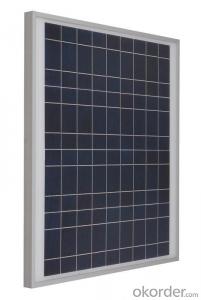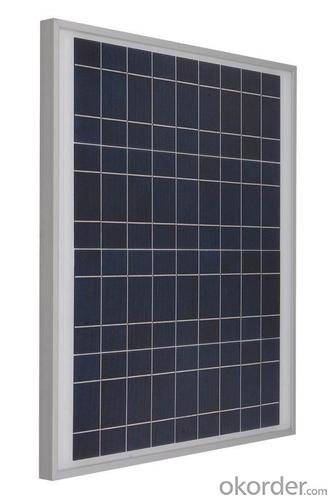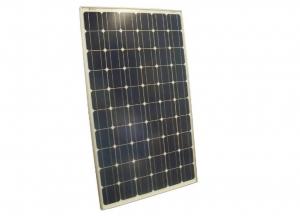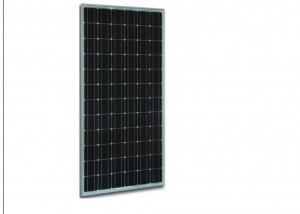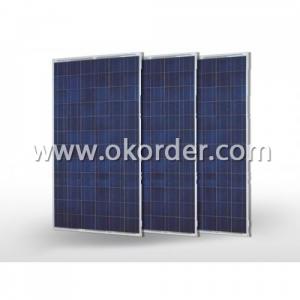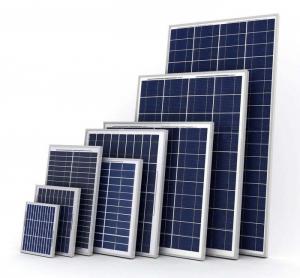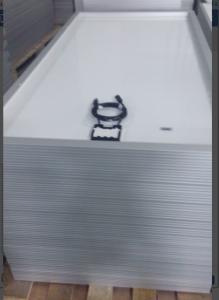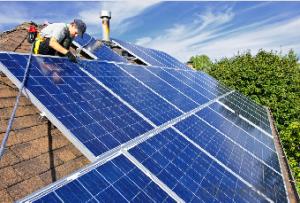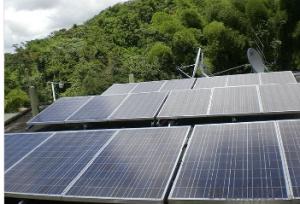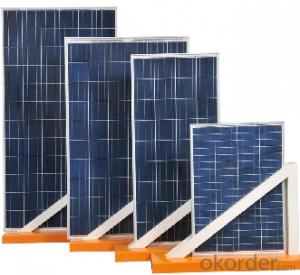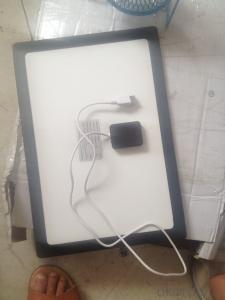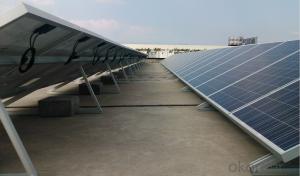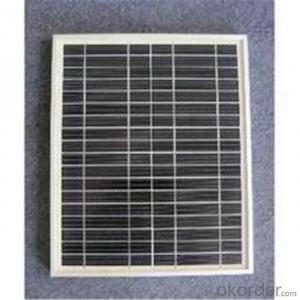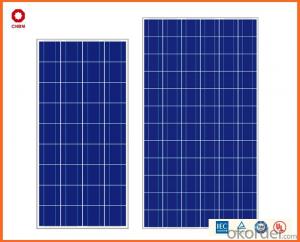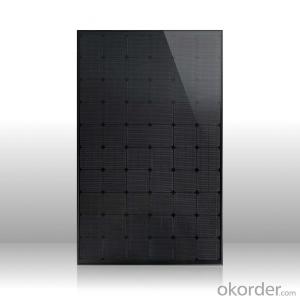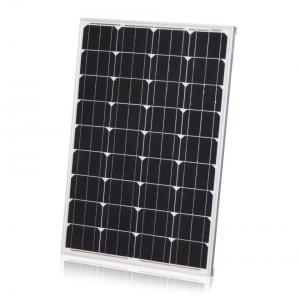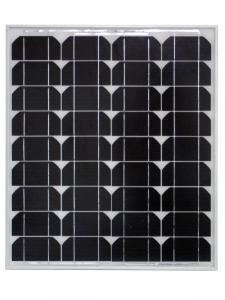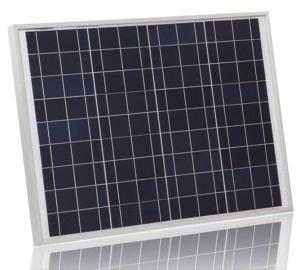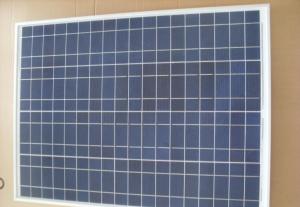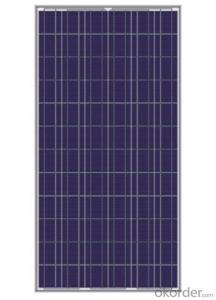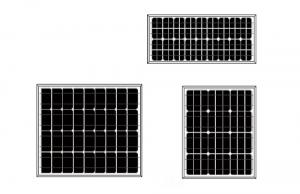50w Poly Solar Panel for Solar Power System - Solar Panels in Miami Florida
- Loading Port:
- Tianjin
- Payment Terms:
- TT OR LC
- Min Order Qty:
- 100 watt
- Supply Capability:
- 10000 watt/month
OKorder Service Pledge
OKorder Financial Service
You Might Also Like
Specification
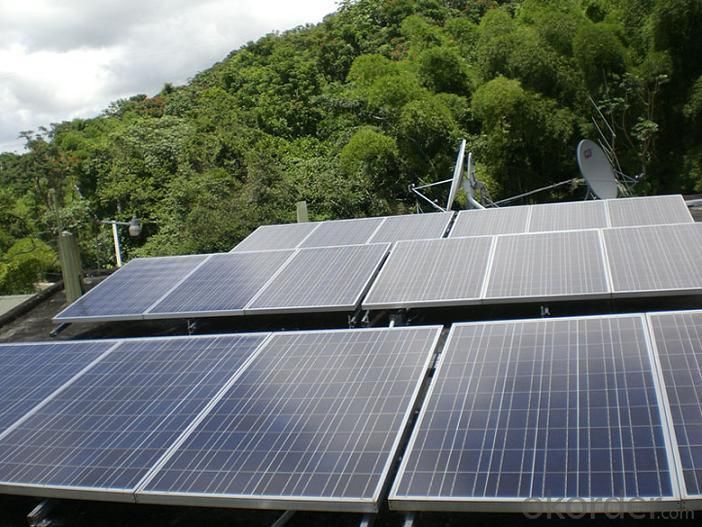
Quality Ensurance:
1. Excellent A Grade solar cell from Motech or Hanwha solar.
2. Excellent backsheet from SFC, 3M;
3. EVA from Bridgestone / First;
4. Junction box with UL and TUV listed - GZX, IP65;
5. High transmission low iron tempered glass from Xinyi Glass - China Top 1;
6. Solar panels with TUV, CE, ISO9001 certified.
Strong, lightweight aluminum frame design with reinforced sealing and load hold to prevent freezing and warping, and stand against high wind.
Under Standard Test Conditions(STC): Irradiance of 1000W/m2, Am1.5 and 25ºC cell temperature
Operating Temperature: -40 ~ +85° C
Storage Temperature: -40 ~ +85° C
Mechanical Characteristics
Dimensions: 570mm(L) x 665mm(W) x 30mm(H)
Weight: 4.5kg
Solar Cells: Polycrystalline solar cells, 36 cells in a 4x9matrix connected in series
Module Warranty:
25-year limited warranty of 80% power output; 10-year limited warranty of 90% power output;
5-year limited warranty of materials and workmanship.
| Performance | ||
| Rated Power[Pmax] | 50W | |
| Power Tolerance | ± 3% | |
| Nominal Voltage | 18.25V | |
| Design Life | 25 years | |
| Electrical Characteristics | ||
| Maximum Power [Pmax] | 50W± 3% | |
| Maximum Power Voltage [Vmp] | 18.25V± 3% | |
| Maximum Power Current [Imp] | 2.74A± 3% | |
| Short-Circuit Current [Isc] | 3.02A± 3% | |
| Open-Circuit Voltage [Voc] | 21.96V± 3% | |
| Current Temperature Coefficient | 0.08%/º C | |
| Voltage Temperature Coefficient | - 0.32%/º C | |
| Power Temperature Coefficient | -0.38%/º C | |
| Maximum System Voltage | 1000V | |
- Q: What is the difference b/w them which one is better .
- In the practical sense, the differences are trivial. I'd buy on price per watt, unless space is at a premium (it isn't for most installations).
- Q: Can solar panels be used to power a data center?
- Yes, solar panels can be used to power a data center. Solar energy can be harnessed through photovoltaic panels and converted into electricity to power a data center's operations. This approach helps reduce reliance on traditional energy sources and promotes sustainability. However, the feasibility and effectiveness of using solar panels will depend on factors like the size of the data center, available sunlight, and energy requirements.
- Q: Can solar panels be installed on airports or transportation hubs?
- Yes, solar panels can be installed on airports or transportation hubs. In fact, many airports and transportation hubs around the world have already installed solar panels as part of their sustainability initiatives. These panels help generate clean and renewable energy, reducing their carbon footprint and dependence on traditional energy sources. Additionally, the large open spaces available in these areas make them ideal for solar panel installations.
- Q: How do solar panels affect the property's community engagement?
- Solar panels can positively impact a property's community engagement by promoting sustainability and renewable energy. They serve as a visible and tangible example of the property's commitment to reducing its carbon footprint, which can inspire others in the community to adopt similar practices. Additionally, solar panels often generate excess energy that can be shared with the community, fostering a sense of collaboration and local energy independence.
- Q: I need to know what the main components of a solar water heater and how they functionThanks if you answer x
- The basic components in home solar heating systems include: Collectors to take the heat from the sun and pass it to a fluid The heat transfer fluid which takes the heat from the collector for use or storage Heat exchangers to transfer the heat from the fluid to a home’s domestic water. Pumps to move the fluid through the collector and/or the exchanger, and sometimes to move the domestic water through the other side of the exchanger. Controllers to run the pumps when there is collector heat available.
- Q: how big of an solar panel do i need to power/charge my laptop?would one from canadian tire sell the right one?
- Yes. Basically, here's what you need (I'm keeping this general on purpose): The panels themselves -- how large an area depends on average power consumption and how much power you can get on average. That, in turn , depends on climate. You'd need more in Seattle than Tuscon, for example. I'd guess something in the neighborhod of 0 square feet. Depends also on haow many gadgets (printers, etc.) you have. You'll need a power storage system. Lithium gives you the best poser density (of off-the-shelf stuff) but an ordinary car battery works well and is reliable. And, of course, a control system to manage the power generation/storage/use so everything works together without that annoying smell that tells you you just cooked a few hundred bucks worth of equuipment! :)
- Q: Can solar panels work in cloudy weather?
- Yes, solar panels can still work in cloudy weather, although their energy production may be reduced. Cloud cover reduces the amount of sunlight reaching the panels, resulting in a lower output. However, modern solar panels are designed to generate electricity even in low-light conditions, making them still effective in producing energy during cloudy days.
- Q: where can i get some solar panels for a camper trailer
- There are many suppliers for solar panels. Try camping shops, BQ or other leisure shops. Alternatively try one of the companies listed here:
- Q: Simplfy it so i can understand pls and put it in stages such as . sun hits solar panel plsHow many different types of solar panels are there?
- Sunlight hits the solar panel, and DC power is generated. By the power is not stable. It becomes stronger or weaker according to the strength of sunlight.
- Q: Can solar panels be used for powering a hotel or hospitality establishment?
- Yes, solar panels can definitely be used to power a hotel or hospitality establishment. Solar energy is a reliable and renewable source of power that can be harnessed to meet the energy demands of such establishments. By installing solar panels, hotels and hospitality establishments can not only reduce their carbon footprint but also save on electricity costs in the long run. Moreover, advancements in solar technology have made it possible to store excess energy and use it during non-sunlight hours, ensuring a consistent power supply for the establishment.
Send your message to us
50w Poly Solar Panel for Solar Power System - Solar Panels in Miami Florida
- Loading Port:
- Tianjin
- Payment Terms:
- TT OR LC
- Min Order Qty:
- 100 watt
- Supply Capability:
- 10000 watt/month
OKorder Service Pledge
OKorder Financial Service
Similar products
Hot products
Hot Searches
Related keywords
